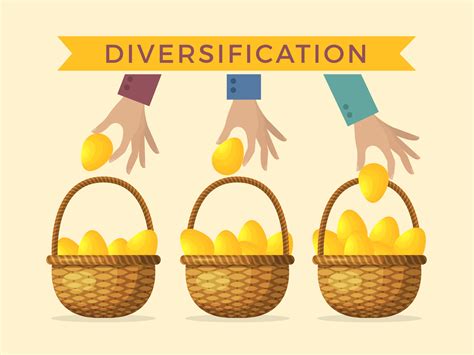The Path to Early Retirement: Unlocking Your 401k’s Full Potential
For many men, the dream of an early retirement—free from the daily grind and ripe with personal pursuits—is a powerful motivator. While various financial vehicles exist, the 401k stands as one of the most robust and tax-advantaged tools for accumulating significant wealth. Maximizing its potential isn’t just about contributing; it’s about strategic planning, consistent action, and understanding the nuances of this powerful retirement account.
This guide will walk you through actionable steps to supercharge your 401k, ensuring you’re on a fast track to financial independence and a comfortable early retirement.

Understanding Your 401k: Contribution Limits and Employer Matches
The foundation of 401k maximization begins with understanding the core rules. Each year, the IRS sets limits on how much you can contribute. For instance, in 2024, the employee contribution limit is $23,000, with an additional $7,500 catch-up contribution for those aged 50 and over. Hitting these limits should be your primary goal.
Crucially, many employers offer a matching contribution, effectively providing free money. Neglecting to contribute enough to secure the full employer match is one of the biggest financial mistakes you can make. It’s an immediate, guaranteed return on your investment that significantly accelerates your savings growth.
Strategic Contribution Tactics for Accelerated Growth
Automate Your Savings
The easiest way to ensure consistent contributions is to automate them. Set your payroll deductions to contribute the maximum allowable amount, or at least enough to get the full employer match. Treat these contributions as a non-negotiable expense.
Utilize Catch-Up Contributions
If you’re over 50, don’t miss the opportunity to contribute an additional catch-up amount. This extra contribution can make a substantial difference, especially if you started saving later or are looking to aggressively build your retirement nest egg in your later working years.

Leverage Annual Increases
Whenever you receive a raise, consider increasing your 401k contribution percentage. Even a small bump can have a significant long-term impact, as you won’t feel the pinch of the increased savings rate if you weren’t accustomed to that portion of your income anyway.
Smart Investment Choices Within Your 401k
Beyond how much you contribute, what you invest in within your 401k matters immensely. Many 401k plans offer a selection of mutual funds, index funds, and target-date funds.
- Diversification: Don’t put all your eggs in one basket. Ensure your portfolio is diversified across different asset classes (stocks, bonds, real estate via REITs) and geographies.
- Low-Cost Funds: High expense ratios can eat into your returns over decades. Prioritize index funds or ETFs with low expense ratios (e.g., 0.10% or less) over actively managed funds that often underperform and charge more.
- Risk Tolerance and Age: While younger investors can typically afford more aggressive, growth-oriented portfolios (higher stock allocation), those closer to retirement might consider gradually de-risking by increasing bond allocation. However, for early retirement, maintaining a growth focus for longer can be beneficial.

Considering a Roth 401k Option
Some employers offer a Roth 401k option. Unlike a traditional 401k where contributions are pre-tax and withdrawals in retirement are taxed, Roth 401k contributions are made with after-tax dollars. The significant benefit? Qualified withdrawals in retirement are completely tax-free. If you expect to be in a higher tax bracket in retirement than you are now, a Roth 401k can be an incredibly powerful tool for tax-free growth.
Beyond the 401k: Complementary Retirement Vehicles
While maximizing your 401k is crucial, it’s often just one piece of the early retirement puzzle. Consider these additional accounts to supplement your savings:
- Individual Retirement Accounts (IRAs): Whether traditional or Roth, IRAs offer additional contribution limits ($7,000 for 2024, plus $1,000 catch-up for 50+) and a broader range of investment options than most 401k plans.
- Health Savings Accounts (HSAs): If you’re eligible for an HSA (typically through a high-deductible health plan), these accounts are triple-tax-advantaged: tax-deductible contributions, tax-free growth, and tax-free withdrawals for qualified medical expenses. Post-age 65, they can function like an additional IRA.
- Taxable Brokerage Accounts: Once you’ve maxed out your tax-advantaged accounts, a standard brokerage account allows for unlimited contributions and flexible access to funds, which can be particularly useful for bridging the gap before you can access your retirement accounts penalty-free (typically age 59½).

The Power of Compounding and Consistency
The true magic of early retirement wealth building lies in the power of compounding interest and unwavering consistency. The earlier you start maximizing your contributions, and the more consistently you do so, the more time your money has to grow exponentially. Even small, regular increases in your contribution rate can lead to hundreds of thousands—or even millions—more in your retirement account over decades.

Conclusion: Take Control of Your Retirement Destiny
Achieving early retirement wealth through your 401k is entirely within reach, but it requires deliberate action and a long-term perspective. By understanding contribution limits, seizing employer matches, making smart investment choices, considering Roth options, and supplementing with other accounts, men can significantly accelerate their journey towards financial independence. Start today, stay disciplined, and watch your retirement dreams become a reality.




